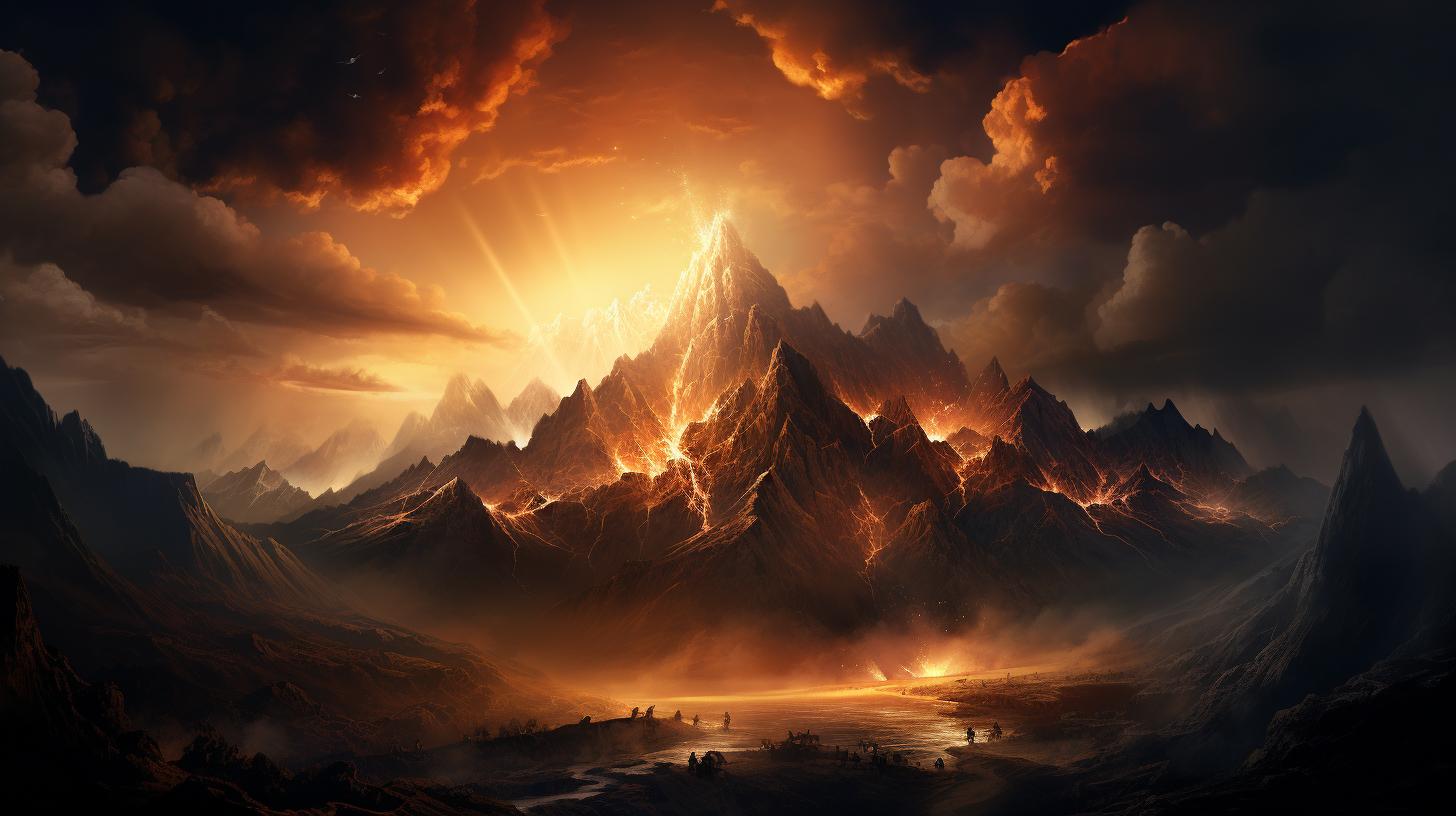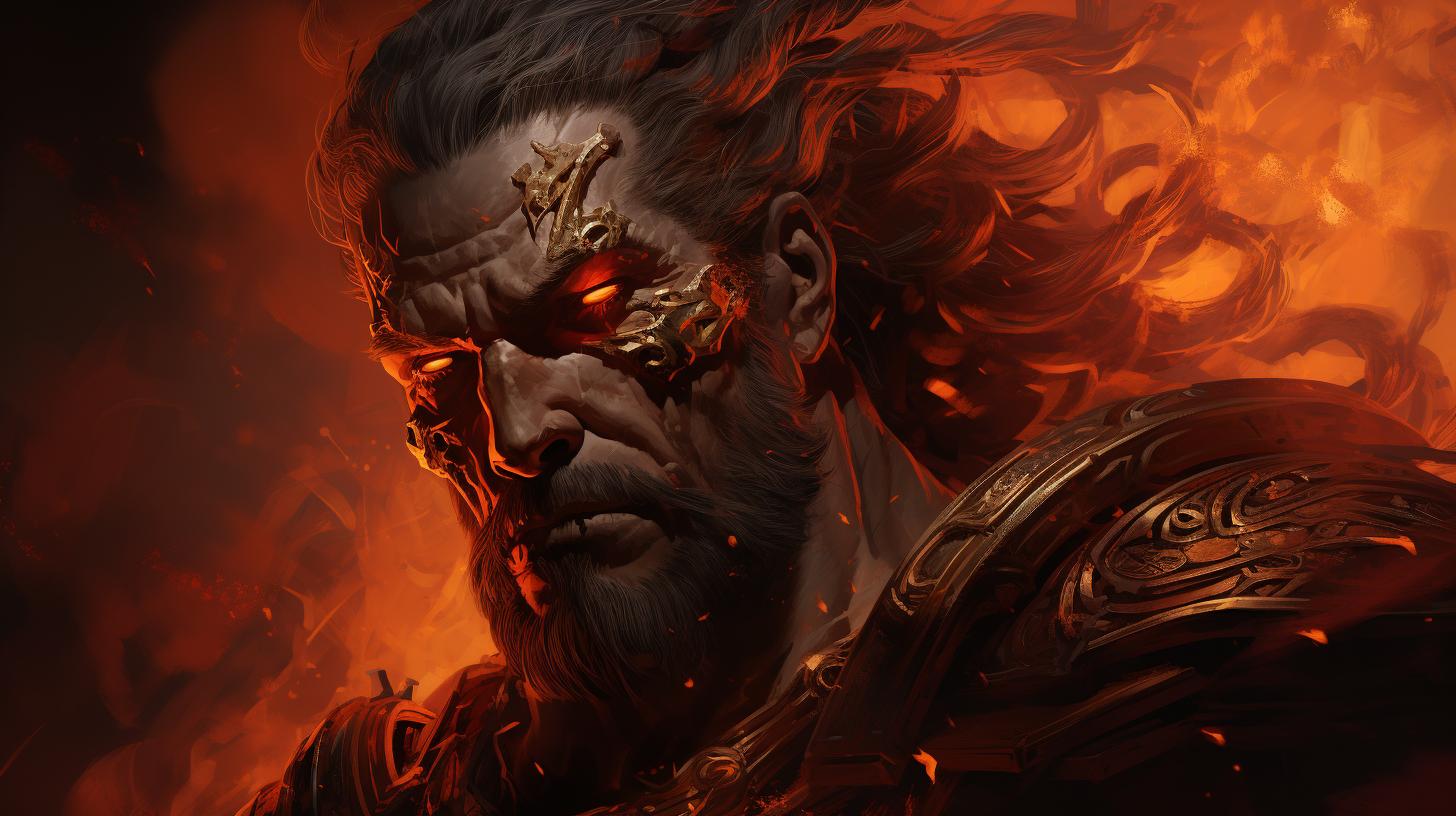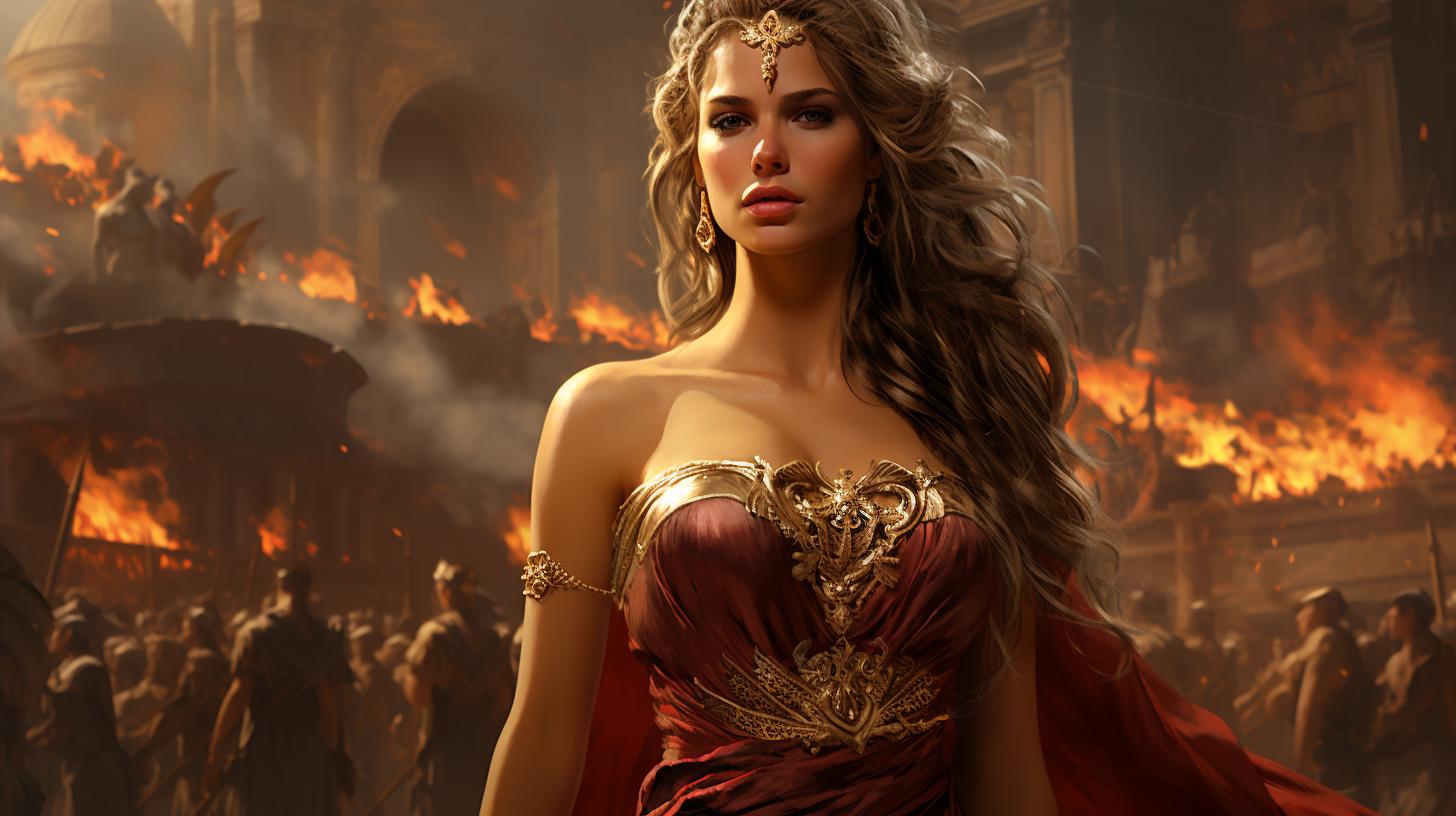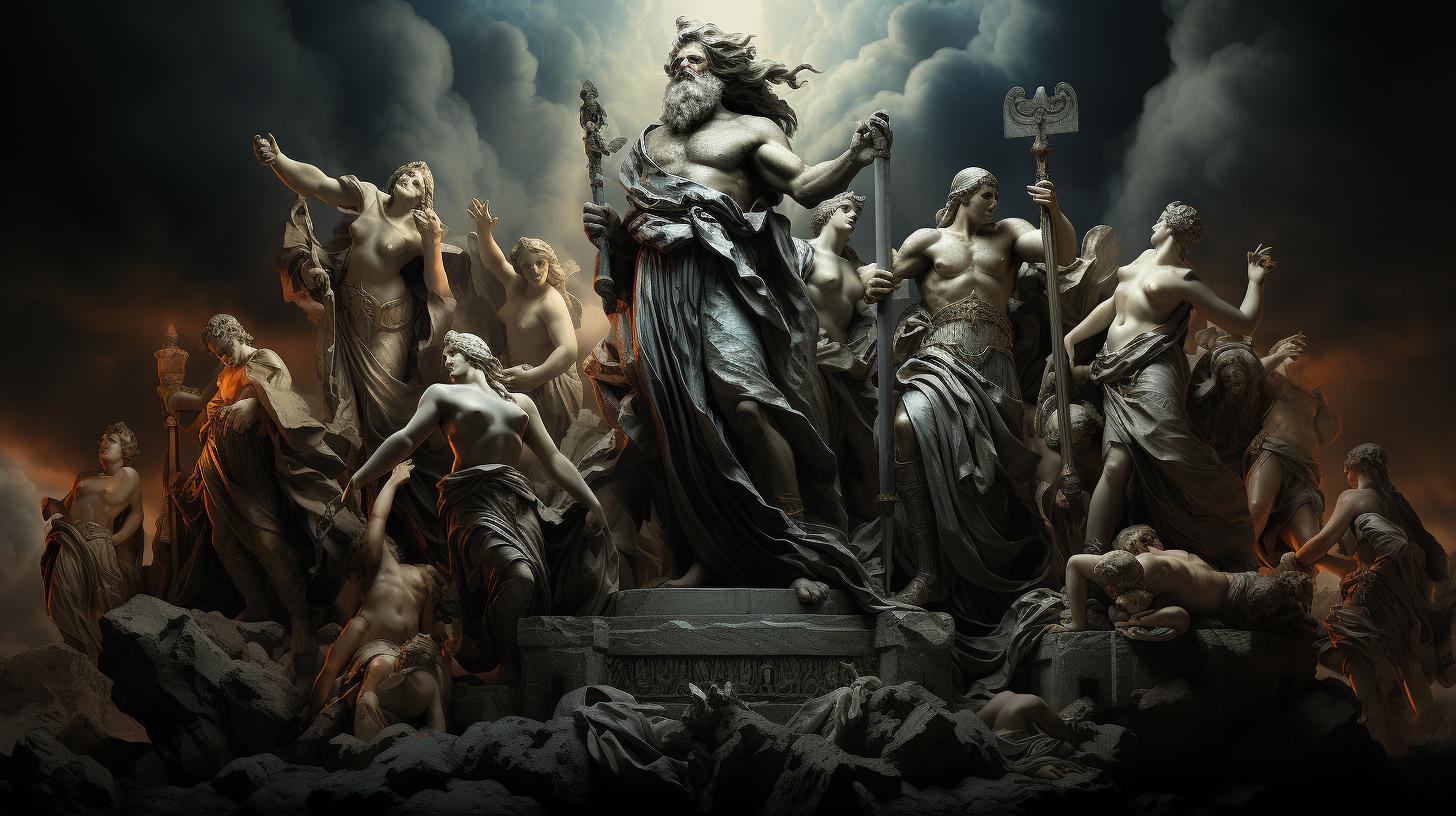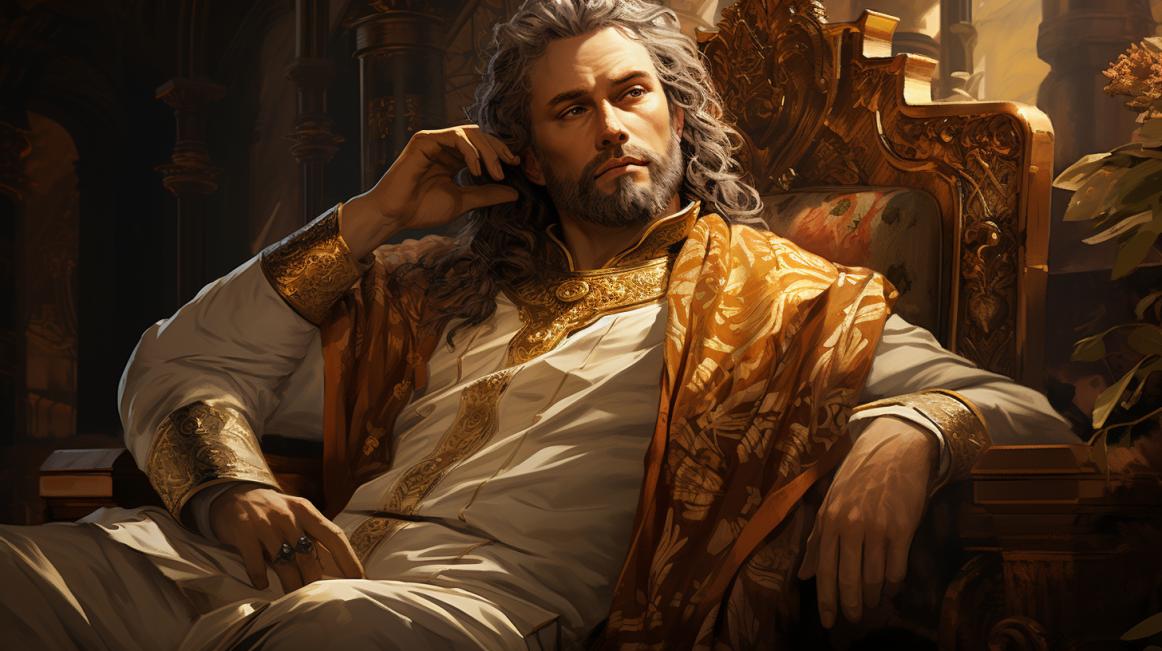Exploring the Rich Mythology of Helikon in Greek Mythology

Located in Greece’s Boeotia region, Helikon Mountain holds a significant place in Greek mythology. This majestic mountain, reaching approximately 5,000 feet in height, serves as the beloved haven of the Muses, the goddesses of inspiration in the realms of art and music.
Helikon’s eastern slopes house a sacred temple and forest, boasting numerous statues that once adorned Constantinople. Additionally, the mountain is renowned for its sacred springs, including the revered Aganipe and Hippocrene, believed to be fountains of artistic creativity.
Helikon’s mythological relevance and cultural importance span through various ancient texts and legendary competitions. Furthermore, the enigmatic figure of Helikon, a semi-god and member of the ancient primordial deities known as the Ourea, adds depth to Greek mythology’s understanding of the world.
Overview of Helikon Mountain in Greek Mythology
The Helikon Mountain holds a significant place in Greek mythology, captivating both scholars and enthusiasts with its rich tales and legends. This section provides an introduction to the mountain and explores its importance within Greek mythology.
It delves into two key aspects: the location and significance of Helikon in Greek mythology, and its role as the cherished home of the Muses, the goddesses of inspiration in art and music.
Location and Importance of Helikon in Greek Mythology
Located in the Beocia region of Greece, the majestic Helikon Mountain is part of the Helicon mountain range, stretching from Mount Parnassus to an impressive height of 8,000 feet. It stands as a notable setting for various myths and legends, seamlessly woven into the tapestry of Greek mythology.
As the favored abode of the Muses, Helikon holds a prominent place in the realm of inspiration and creativity.
Helikon as the Home of the Muses
Within the eastern slopes of Helikon, also known as Boeotia, lies a sacred temple and forest that were held in reverential regard. This tranquil and hallowed sanctuary was adorned with numerous statues, which, over time, were relocated by the emperor Constantine the Great to grace his newly founded city, Constantinople.
These statues serve as a testament to the profound role Helikon played in Greek culture and religious practices.
Moreover, it is on this sacred mountain that the Muses found their sanctuary and sanctuary. The divine sisters, patrons of artistic and musical inspiration, would gather and grace Helikon with their enchanting presence.
Legends and stories have celebrated the bond between the Muses and this sacred mountain, further enhancing its reputation as a beacon of creativity and artistic expression.
The Sacred Sites of Helikon in Greek Mythology
The mountain of Helikon in Greek mythology is not only renowned as the favored dwelling place of the Muses but also houses several sacred sites that hold great significance within the ancient Greek pantheon.
These sites include the Temple and Sacred Forest in Boeotia, as well as the Sacred Springs associated with the mountain.
The Temple and Sacred Forest in Boeotia
Upon the eastern slopes of Helikon, known as Boeotia, stood a temple and a sacred forest deemed exceptionally holy. This revered sanctuary featured an array of statues that were eventually transported by Constantine the Great to adorn his new city, Constantinople.
These statues serve as testament to Helikon’s crucial role in Greek culture and religion.
The Significance of Helikon’s Sacred Springs
Helikon Mountain is renowned for its sacred springs, two of the most prominent being Aganipe and Hipocrene. According to legend, Hipocrene spring was formed by the hoofprints of the winged horse Pegasus, while Aganipe held special meaning for the Muses.
These sacred springs were believed to be sources of immense inspiration, bestowing the gift of artistry and creativity upon those who drank from their waters.
- Aganipe and Hipocrene – Sacred springs associated with Helikon Mountain
- Hipocrene – Created by Pegasus’ hoofprints
- Aganipe – Held special significance for the Muses
- Sources of inspiration and artistic creativity
The sacred sites of Helikon Mountain, including the temple, forest, and springs, stand as tangible connections to the ancient Greek belief system, serving as sources of inspiration and reinforcing the cultural and religious importance of Helikon in Greek mythology.
Helikon in Ancient Greek Literature
Helikon played a significant role in ancient Greek literature, with mentions in various texts and mythical accounts. The mountain’s connection to the literary world can be observed through references in Hesiod’s Theogony and its portrayal in classical mythology and poetry.
References to Helikon in Hesiod’s Theogony
Hesiod, a prominent ancient Greek poet, mentions Helikon in his renowned work, Theogony. In this epic poem, Helikon is described as one of the birthplaces of the Muses, the divine goddesses of inspiration and creativity.
Their connection to Helikon emphasizes the mountain’s central role in the realm of arts and culture.
Helikon in Classical Mythology and Poetry
Beyond Hesiod’s Theogony, Helikon’s presence can be found in classical mythology and poetry. The mountain is often depicted as a sacred abode and a source of inspiration for poets and musicians.
It serves as a setting for legendary competitions, creative awakenings, and encounters between gods and mortals.
Helikon’s significance in ancient Greek literature extends to various poetic works, where its magnificent landscapes and mythical associations are celebrated.
Poets often drew inspiration from the natural beauty and rich mythological history of Helikon, creating works that weave together the enchantment of the mountain and the tales of the gods.
Through its references in Hesiod’s Theogony and its portrayal in classical mythology and poetry, Helikon asserts its reputation as an influential muse and a muse’s dwelling place within the realm of ancient Greek literature.
4. Competitions and Legends Involving Helikon
Within Greek mythology, Helikon Mountain is associated with various competitions and legends that showcase its significance and mystical allure.
The Musical Competition with Mount Kithairon
One notable legend involves a remarkable musical competition between Helikon and Mount Kithairon. As the Muses sang their melodic tunes, Helikon filled with sublime pleasure, ascending towards the heavens. However, this enchanting ascent was halted by the mighty Pegasus, who struck the mountain summit with its helmet.
According to the tale, Hermes declared that Mount Kithairon triumphed with the majority of votes, adorning it with garlands of fir. In a fit of anguish, Helikon hurled a smooth rock into the abyss, causing the mountain to quake and shatter into a thousand pieces.
The Contest between the Muses and the Pierides
A different captivating narrative involving Helikon portrays a contest between the Muses and the Pierides, nine sisters who were known for their arrogance. The Muses emerged victorious in this epic singing competition, and in celebration of their triumph, they transformed the arrogant sisters into birds.
The Mythological Figure of Helikon
The figure of Helikon holds a significant role in Greek mythology, representing both a semi-god and a wise advisor. As a semi-god, Helikon is portrayed as a champion and ruler within his domain.
His presence in ancient texts offers insights into the foundations of the Greek world and its mythology. Helikon belongs to a special group of immortals known as the Ourea, primordial gods born from Gaia, the Earth.
These Ourea, numbering ten in total, predate humans and other gods, with each representing a specific mountain in Greece.
The Role of Helikon as a Semi-God and Advisor
Helikon’s significance as a semi-god lies in his connection to the understanding of the Greek world. While rarely mentioned in Greek mythology, his presence is essential for ancient Greeks to comprehend the intricate workings of their universe.
As a ruler and advisor, Helikon guides and counsels those who enter his realm, offering wisdom and assistance in various endeavors. Although his tales may be scarce, the importance of his character cannot be overlooked in the mythological tapestry of ancient Greece.
Helikon and the Ourea, Primordial Gods of Mountains
Being part of the Ourea, Helikon shares a sacred bond with the other nine primordial deities representing specific mountains in Greece. These ancient gods symbolize the power and majesty of the natural landscape, playing a vital role in Greek mythology and religious beliefs.
As the personification of Helikon Mountain, Helikon embodies the ancient Greeks’ reverence for natural formations and their understanding of the divine forces shaping their world. The Ourea, including Helikon, provide a connection between the earthly realm and the realm of the gods, giving deeper meaning to the significance of mountains in Greek mythology.
.

